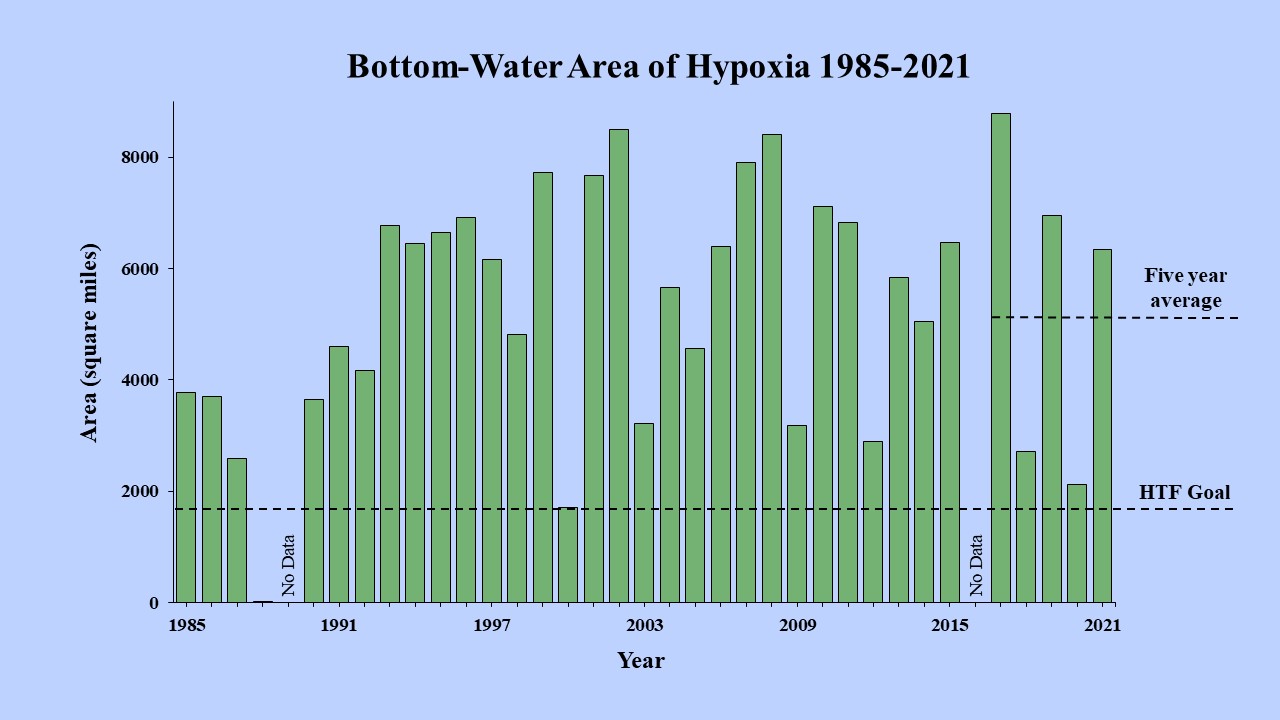
NCCOS-supported scientists have determined that this year’s Gulf of Mexico “dead zone”—an area of low oxygen that can kill fish and marine life—is approximately 6,334 square miles, equivalent to more than four million acres of habitat potentially unavailable to fish and bottom species.
This measurement brings the five-year average to 5,380 square miles, which is 2.8 times larger than the 2035 target set by the Mississippi River/Gulf of Mexico Hypoxia Task Force (HTF).
The annual dead zone survey was led by scientists at Louisiana State University and the Louisiana Universities Marine Consortium (LUMCON) during a research cruise from July 25 – August 1 aboard the LUMCON R/V Pelican.
In June 2021, NOAA forecasted an average-sized hypoxic zone of 4,880 square miles, based primarily on the Mississippi River discharge and nutrient runoff data from the U.S. Geological Survey. While the model results underestimated the measured size of the zone this year, they were within the expected margin of uncertainty for the forecast and provide further evidence of the robustness of the models to relate nutrient inputs to observed hypoxia size in the summer.

The HTF uses the annual hypoxic zone size determination as a key metric to measure progress toward achieving the five-year average target of 1,900 square miles or smaller by 2035. This summer’s dead zone demonstrates the importance of continued monitoring to understand how ocean conditions influence the zone size. Maintaining ongoing summer surveys and calculating a five-year average allows scientists to capture the true dynamic nature of the zone more than a single annual measurement.
Exposure to hypoxic waters has been found to alter fish diets, growth rates, reproduction, habitat use, and catchability. NOAA continues to fund monitoring and research efforts to understand the impacts of hypoxia on fish and fisheries in the Gulf of Mexico through its Northern Gulf of Mexico Ecosystems and Hypoxia Assessment (NGOMEX) program. Data from this cruise are also used by NOAA and its partners to refine models to more accurately simulate the relationships between river discharge, nutrient loads, and oceanographic conditions that can cause and sustain hypoxic conditions.
For more information about the 2021 Gulf of Mexico dead zone, view the NOAA Press Release or watch this Ocean Today video.
